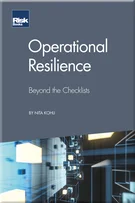Optimal Currency Composition of Debt 2: Protect Leverage
Foreword
Introduction
Theory and Practice of Corporate Risk Management
Theory and Practice of Optimal Capital Structure
Introduction to Funding and Capital Structure
How to Obtain a Credit Rating
Refinancing Risk and Optimal Debt Maturity
Optimal Cash Position
Optimal Leverage
Introduction to Interest Rate and Inflation Risks
How to Develop an Interest Rate Risk Management Policy
How to Improve Your Fixed-Floating Mix and Duration
Interest Rates: The Most Efficient Hedging Product
Do You Need Inflation-linked Debt?
Prehedging Interest Rate Risk
Pension Fund Asset and Liability Management
Introduction to Currency Risk
How to Develop Currency Risk Management Policy
Translation or Transaction: Netting Currency Risks
Early Warning Signals
How to Hedge High Carry Currencies
Currency Risk on Covenants
Optimal Currency Composition of Debt 1: Protect Book Value
Optimal Currency Composition of Debt 2: Protect Leverage
Cyclicality of Currencies and Use of Options to Manage Credit Utilisation
Managing the Depegging Risk
Currency Risk in Luxury Goods
Introduction to Credit Risk
Counterparty Risk Methodology
Counterparty Risk Protection
Optimal Deposit Composition
Prehedging Credit Risk
xVA Optimisation
Introduction to M&A-related Risks
Risk Management for M&A
Deal-contingent Hedging
Introduction to Commodity Risk
Managing Commodity-linked Revenues and Currency Risk
Managing Commodity-linked Costs and Currency Risk
Commodity Input and Resulting Currency Risk
Offsetting Carbon Emissions
Introduction to Equity Risk
Hedging Dilution Risk
Hedging Deferred Compensation
Stake-building
In this chapter, we continue the discussion from Chapter 21. This time the focus is on preserving the leverage, defined as net debt to EBITDA.
BACKGROUND
Information Technology Company (ITC) has now decided to protect the leverage as it is impacting the credit rating of the company and is a key factor in bank covenants. ITC would like to change the composition of its debt to offset the volatility of EBITDA. On the other hand, foreign currency debt may mean higher interest rates and financing costs and this should also be taken into consideration.
COMPANY OBJECTIVES
-
-
To find the optimal currency mix of debt that reduces the volatility of net leverage at minimal interest cost.
-
-
-
To satisfy accounting constraints for net investment hedges.
-
ANALYSIS
The composition of assets and liabilities of ITC is shown in Table 22.1, where we highlight the new rows that are relevant for the leverage calculation.
How is the leverage impacted by FX rates? Whereas the numerator (net debt) is split equally between all five currencies, the denominator (EBITDA) is heavily weighted towards the domestic currency, EUR, with 60% in EUR and 40% equally split
Copyright Infopro Digital Limited. All rights reserved.
As outlined in our terms and conditions, https://www.infopro-digital.com/terms-and-conditions/subscriptions/ (point 2.4), printing is limited to a single copy.
If you would like to purchase additional rights please email info@risk.net
Copyright Infopro Digital Limited. All rights reserved.
You may share this content using our article tools. As outlined in our terms and conditions, https://www.infopro-digital.com/terms-and-conditions/subscriptions/ (clause 2.4), an Authorised User may only make one copy of the materials for their own personal use. You must also comply with the restrictions in clause 2.5.
If you would like to purchase additional rights please email info@risk.net






